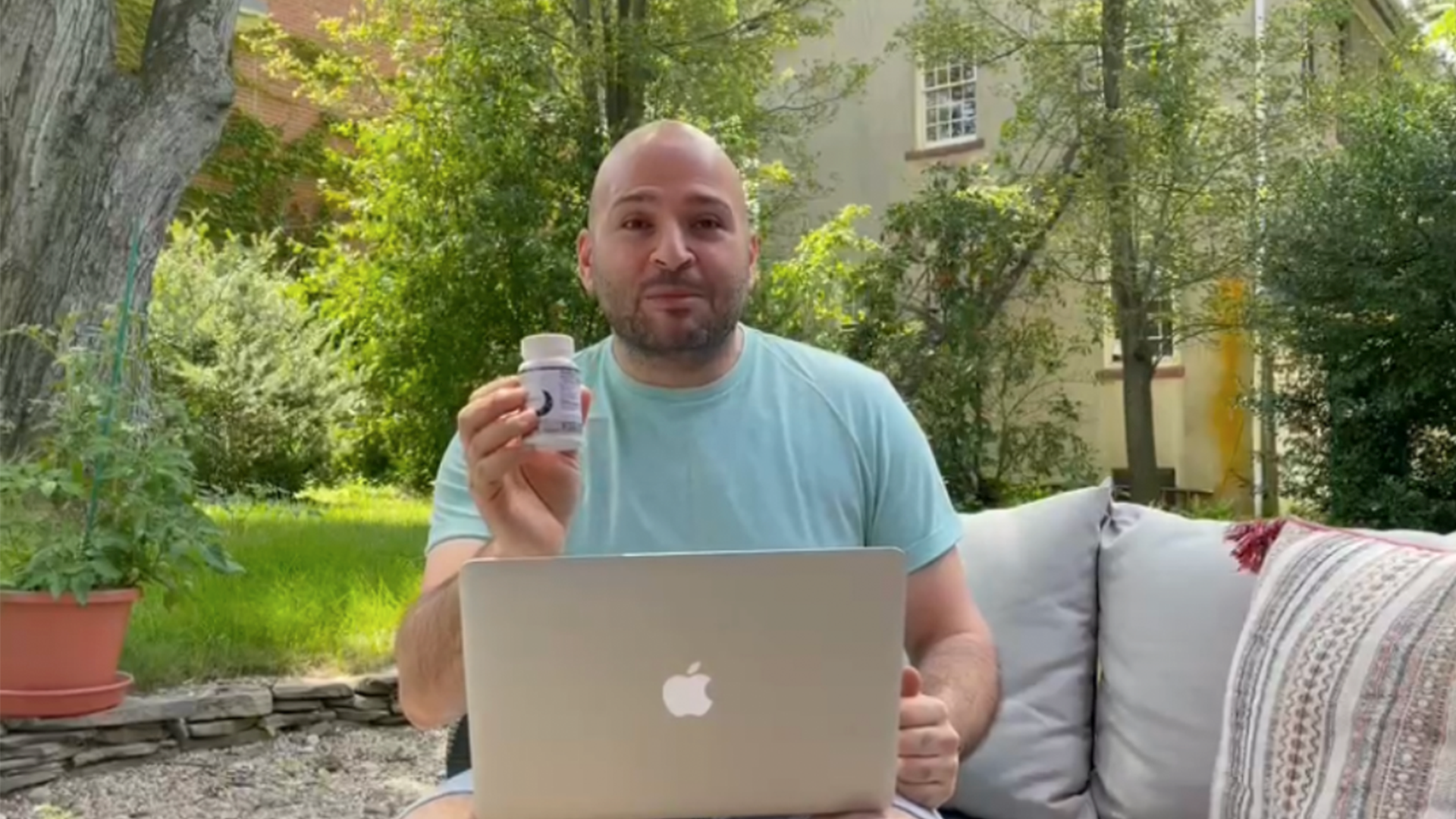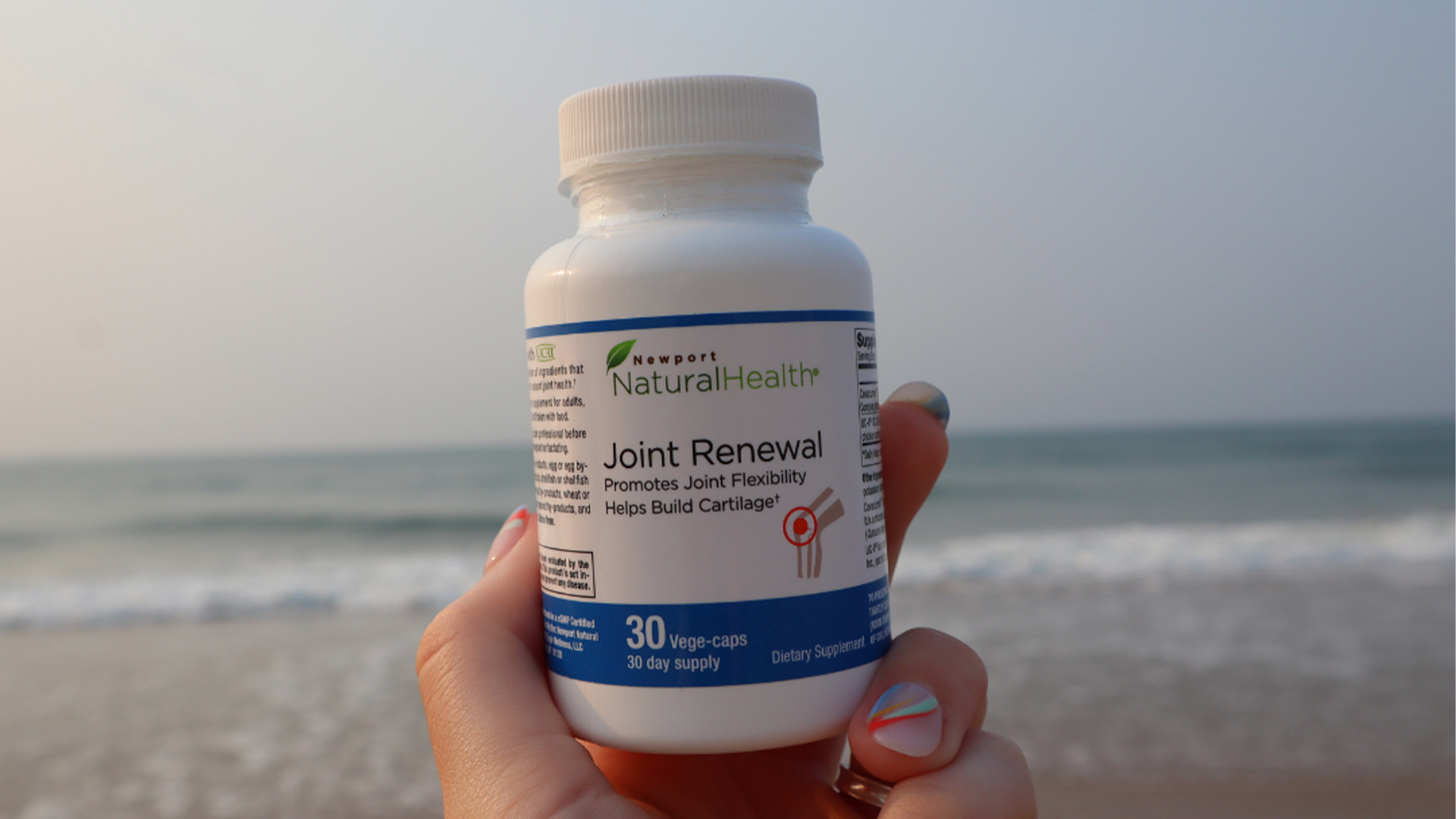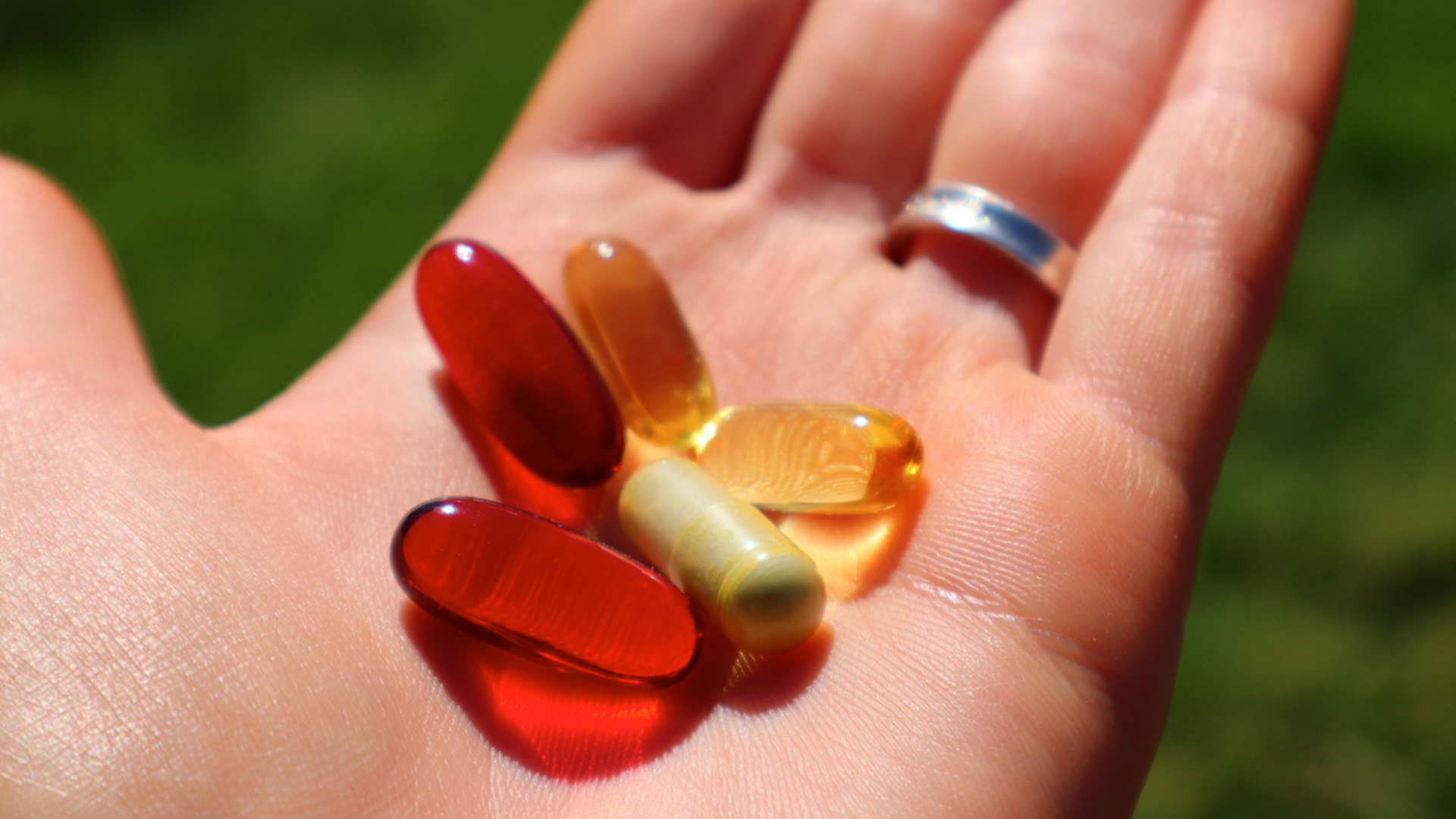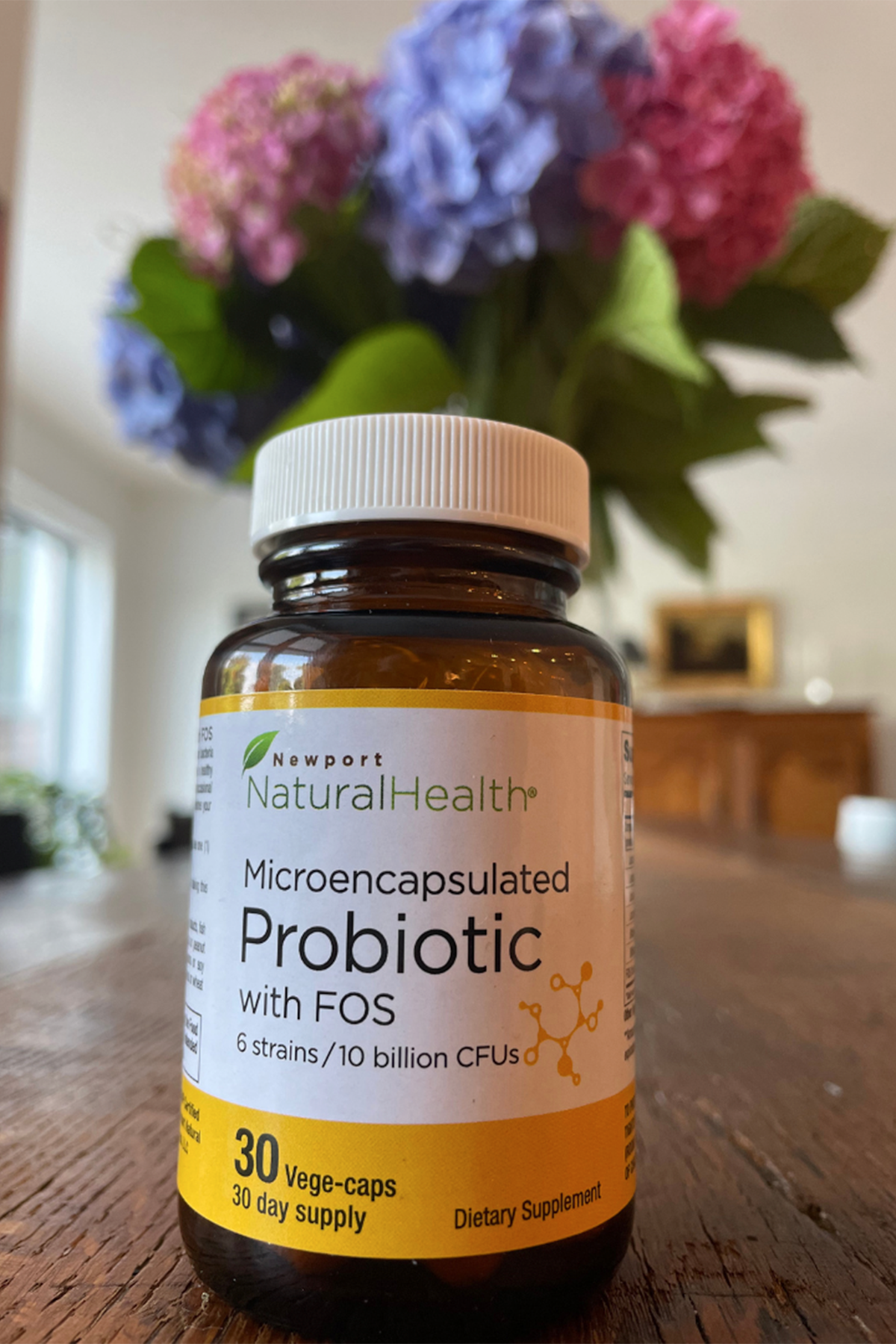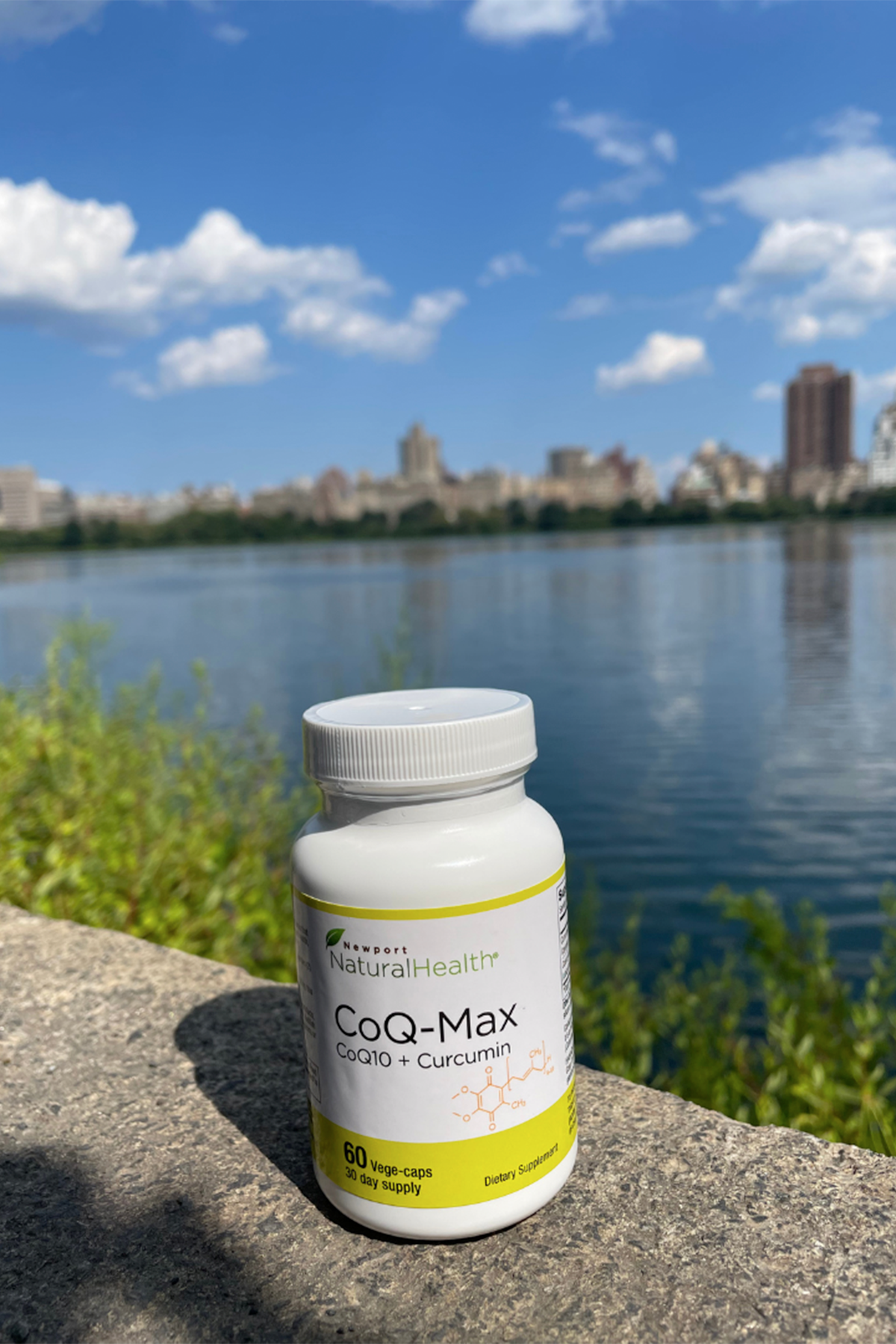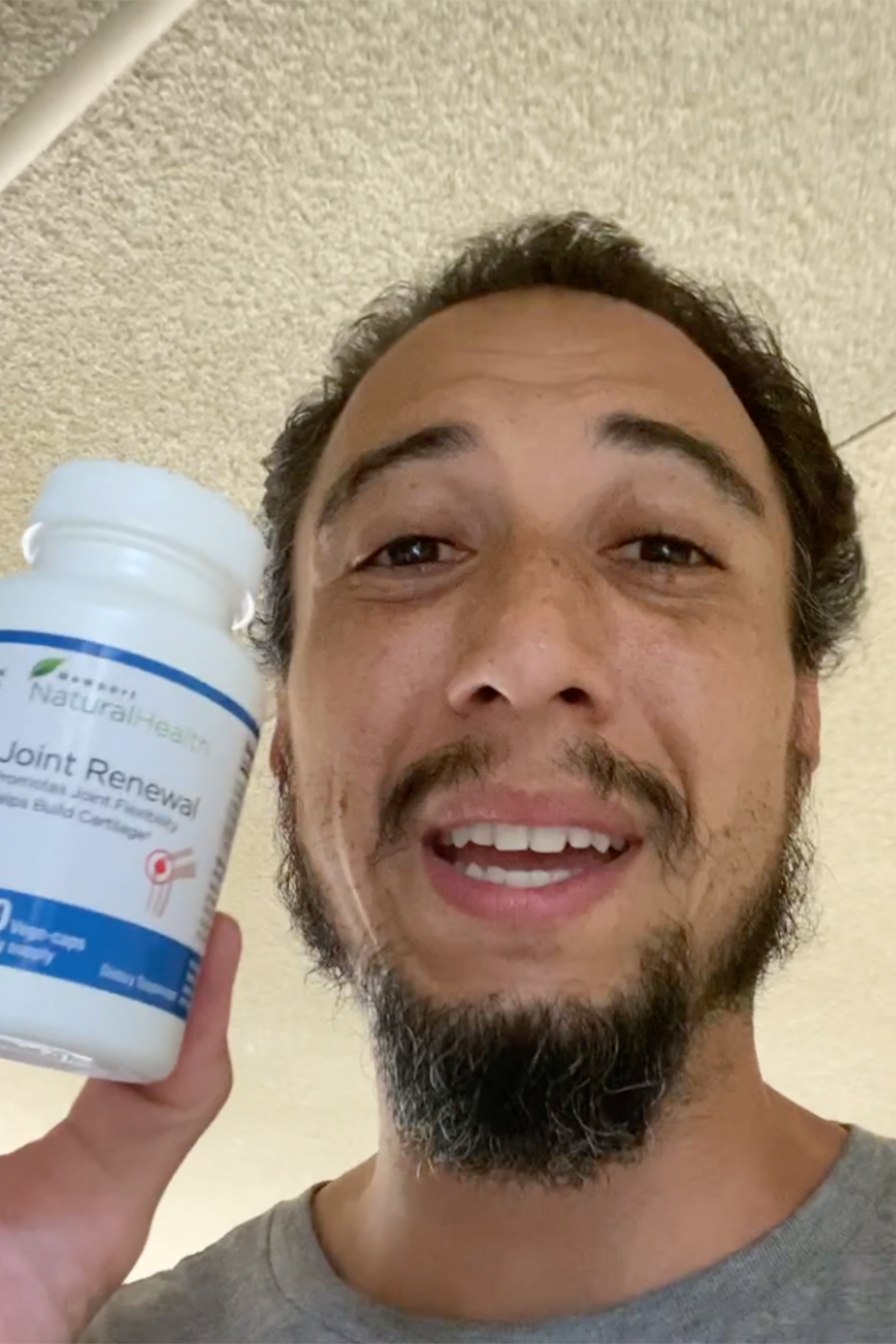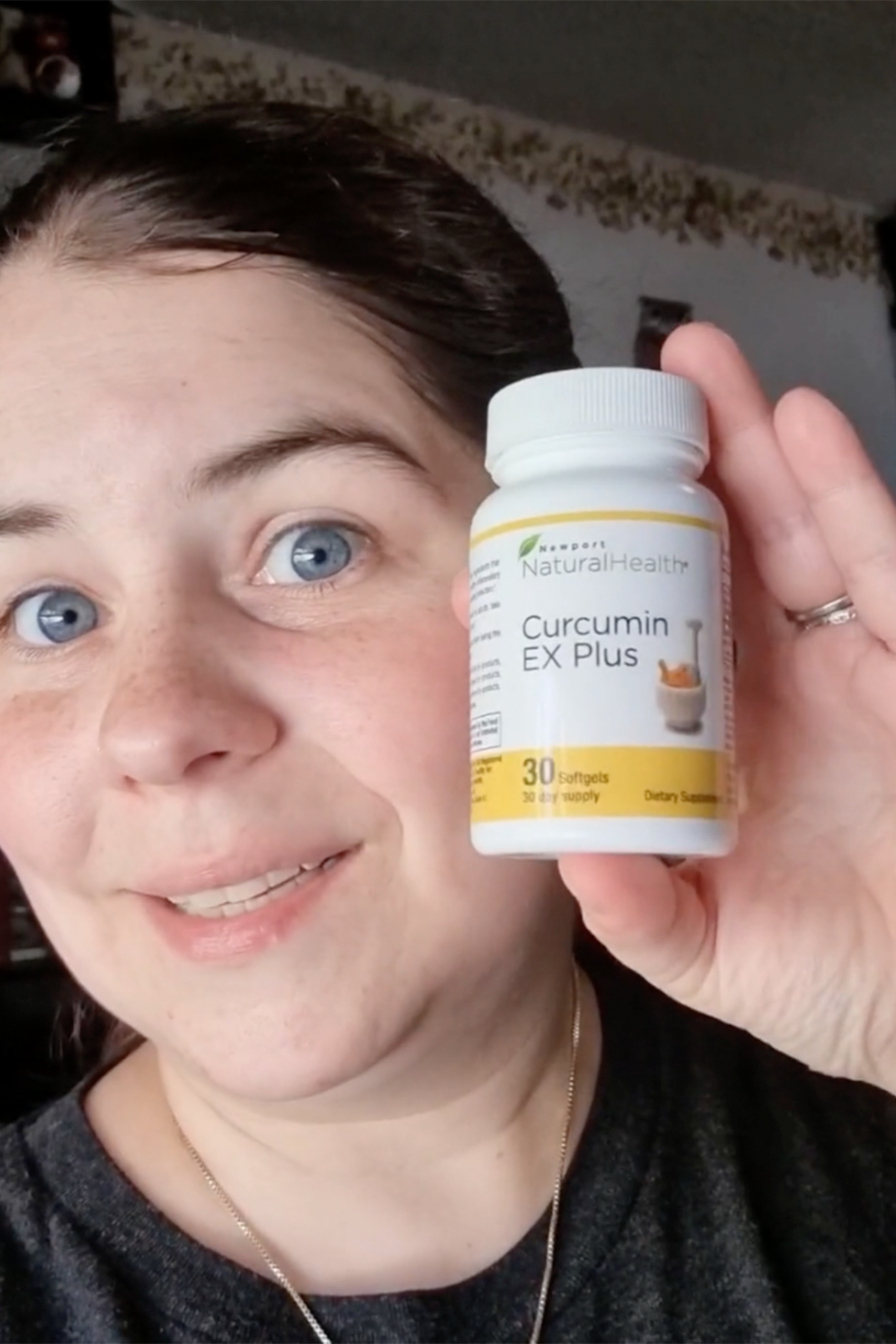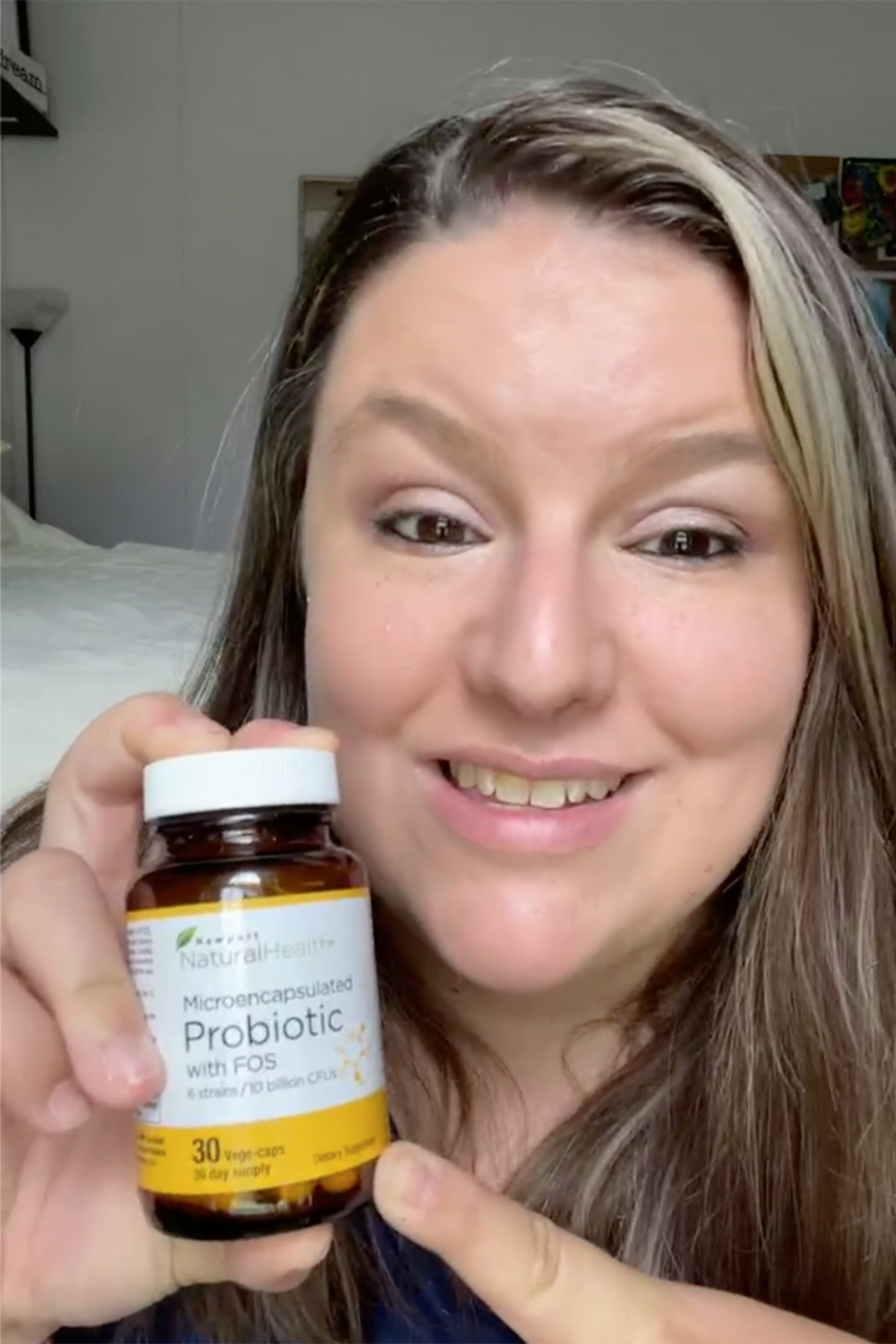Strong bones are our best friends, allowing us to stay mobile and active. But, like so many other health conditions, accurate information about what makes and keeps bones strong and healthy is hard to find.
Calcium is a good example. The dairy industry spends millions of dollars every year to convince us that their products are all that’s standing between us and bones as fragile as crystal. While calcium is important to healthy bones, there are two problems with this view. One, there are other, equally important bone-building substances that cannot be ignored. Secondly, the calcium in dairy is not very helpful for building bones. In fact, quite the opposite is true.
On the other hand, we have drug companies offering an array of expensive osteoporosis medications. If you’re a regular reader, you may know by now that I am not a fan of Big Pharma’s tactics when it comes to pitching products to consumers. The glossy magazine ads and smiling spokesmodels on television only tell you part of the story. For the rest, you need to look at the fine print in the drug insert, where you’ll see that the side effects of these drugs may include disastrous things like disintegration of the jaw bone, unusual bone fractures, upset stomach, vision disorders, and more.
Those side effects are what made my friend Susan ask for advice recently. She had been taking one of the most popular osteoporosis drugs for about two years. Then, a friend who was also taking the medication suffered a horrific case of jawbone erosion requiring multiple surgeries to repair the crumbling bone. Susan’s friend’s jaw never healed properly and, to this day, she has trouble eating and drinking.
“After seeing what she went through, I don’t feel comfortable taking the medication any more,” Susan told me. “But I don’t want to end up hunched over like my grandmother, either. Isn’t there something I can do to keep my bones strong without creating a whole other set of problems?”
As a matter of fact, there are plenty of safe, effective things we all can do to protect and strengthen our bones. And, as the shortcomings of osteoporosis drugs become better known, some medical experts are recommending diet, exercise, and nutritional supplements first, saving prescription drugs for use only as a last resort.
Let’s start with a few key facts about bone health. First, keep in mind that bone is living tissue, not a hard, lifeless object. The elements that make up our bones are constantly being renewed, with old bone material discarded and healthy, new bone replacing it. But to do that, certain nutrients need to be available, while substances that weaken bones need to be minimized. Just as importantly, bone needs exercise to stay strong and healthy.
Tests Are Not the Whole Story
In a moment, we’ll take a closer look at each of the healthy bone elements. But first, I’d like to reassure any readers who have been diagnosed with osteoporosis and are worried about their condition. The well-known bone mineral density (BMD) tests that often are recommended for middle-aged and older women only provide a partial picture of bone health.
For one thing, women (or men, for that matter) with small frames could be diagnosed with osteoporosis simply because the BMD tests don’t distinguish between small-boned and big-boned individuals. So, if you have a slight build and have been told you have osteoporosis, that diagnosis may not be accurate at all. On the other hand, a big-boned person may believe all’s well, when, in fact, her bones are not in good shape. (One easy test for small-frame size is if your thumb and index finger can encircle your wrist.)
So, how do you know if you have osteoporosis or not? Some symptoms to look for include slowly losing height, foot and/or leg cramps at night, gum disease, loose teeth, and constant lower back pain. Once again, please don’t panic if you have one of these symptoms. Leg and foot cramps, for example, can be due to a lack of potassium or simple dehydration. If you are “shrinking” in terms of height, however, I would recommend a thorough checkup by your physician.
Now, let’s look at what you can do to maintain healthy, strong bones without prescription drugs.
1. Moving Matters
At the risk of sounding like a broken record, my first recommendation for strong bones is daily, weight-bearing exercise. Weight-bearing workouts include walking, jogging, yoga, Tai Chi, and weight training or resistance exercise. Activities such as biking and swimming don’t count, because your weight is supported either by the bike or the water.
Regular, weight-bearing exercise is a signal to the body to deposit minerals in the bones, especially in the hips, spine, and legs, where the minerals can be used to fortify the bones. Exercise is so important to bone building that a sedentary lifestyle is considered a risk factor for osteoporosis, just like smoking, a poor diet, or excessive alcohol consumption. After a month or so of regular walking, Susan discovered that she enjoyed her walks more than she thought possible. “I complained a lot during the first few weeks about having to get up early and exercise,” she recounted, “but then one day it rained and I couldn’t go. By noon, I realized that I really missed my daily walk. It’s a good way to have time to yourself, to think and plan the day. Plus, it’s good for my bones – and it’s free! Now that’s what I call a deal.”
2. Bone-Building Beverages
When it comes to strong bones, what you drink matters. You may have heard, for example, that drinking soda is bad for your bones. That’s absolutely true! Soda contains phosphates, which leach calcium from bones. So Rule #1 – no sodas! Alcohol and caffeinated beverages should be kept to a minimum, too.
Fresh, filtered, pure water is a much better choice. That said, however, I need to add one caveat: if your water contains high doses of fluoride, as some municipal water sources do, you may have a problem. Studies have shown that high doses of flouride make hip fractures 20 to 40 percent more likely.
If your municipal water supply has high doses of flouride, I recommend purchasing fluoride-free toothpaste and mouthwash, and possibly using a water filter that removes fluoride.
But what about milk? It’s loaded with calcium, as the “milk mustache” ads constantly remind us. Actually, the truth is not so simple. Yes, milk does contain calcium, but it is not in a form that is easily absorbed by our bodies. Nor is it a healthy beverage if it comes from factory-farm cows treated with antibiotics and growth hormones. If you enjoy drinking milk, look for a product that comes from organically raised, grass-fed cows that have not been treated with hormones or other drugs. The calcium will not be more absorbable, but at least the milk is healthier.
The bigger problem with milk as a bone-builder comes from the fact that the Standard American Diet’s (SAD) foundation of meat, eggs, and dairy creates an acidic environment in the body. When our bodies are overly acidic, buffering minerals like calcium are pulled from the bones to reduce acidity. Drinking a glass of milk raises acidity, which forces our bodies to steal the calcium in the milk and use it for buffering, rather than bone building – exactly the wrong outcome!
3. Diet Suggestions
If there is one category of food that can help strengthen bones, leafy greens is it. Simply add several servings of leafy greens and calcium-rich veggies (like broccoli and kale) to your daily diet. Another easy way to increase your intake of green foods is with a combination product that contains nutrients from vegetables and greens.
Seafood is also a good source of calcium, especially salmon, sardines, and shellfish like clams, oysters, and shrimp. Given the possibility of contamination from pollutants in water, though, I would recommend eating seafood no more than twice each week.
4. Bone Building Supplements
Clearly, we need calcium to maintain good bone health. Since it’s difficult to get the Recommended Daily Allowance (RDA) from food alone, supplements are required. (Currently, the RDA states that adult men and women up to age 50 should consume 1,000 milligrams (mg) of calcium daily. After age 50, women need 1,200 mg daily, while men remain at 1,000 mg. After age 71, both men and women should aim for 1,200 mg each day.)
Recent research suggests that the best way to take calcium supplements is in divided doses throughout the day. So, for example, if your goal is to get 900 mg of calcium from supplements, you should take 300 mg with each meal, rather than 900 mg all at once.
You may have noticed that supplements contain different forms of calcium. In spite of manufacturers’ claims that one form is superior to another, the latest research shows that, when taken with meals, all types of calcium supplements are similar in terms of absorbability.
But calcium alone can’t do the job. If you want to provide the building blocks for healthy bones, you’ll also need adequate supplies of the following nutrients. Sometimes these are included in combination products designed to strengthen bones, so it’s a good idea to check your labels and make sure you’re not doubling up on certain ones.
- Vitamin D3: Stimulates the absorption of calcium from food and decreases the amount of urinary calcium excreted from the body. Although the majority of Americans are very likely deficient in vitamin D3, I strongly recommend having a blood test to determine your own levels of vitamin D3 before supplementing.
- Vitamin K2: Required for protein production in bones. A daily dose of 1,000 mcg (micrograms) is considered safe and effective. Raw cheese, lettuce, and dark, leafy greens are good sources of vitamin K2, along with broccoli, asparagus, Brussels sprouts, and cauliflower. If you eat plenty of greens, supplements may not be necessary.
- Curcumin: Several recent animal studies show that curcumin, an active ingredient in the spice known as turmeric, plays a significant role in healthy bone development, and has a long list of other benefits. Since research into curcumin and osteoporosis is in the early stages, there is no definitive dosage information available yet, so I recommend following the dose recommendations on the product you choose.
- Hydrochloric acid: Also known as betaine hydrochloride or betaine HCI. This substance can help individuals with low stomach acid better absorb calcium and other nutrients. Low stomach acid is a common condition among older individuals, as well as anyone taking antacids or H2 blockers, which decrease stomach acid. Although digestive disorders are very common these days, most are due to too little stomach acid, even if antacid manufacturers would like you to think the opposite is true. Low stomach acid can be corrected by supplements, but I recommend discussing hydrochloric acid with a physician first.
Susan was especially pleased with the results she got from stopping antacid drugs and using hydrochloric acid instead. “My digestion is ten times better, and I don’t have to worry about heartburn every time I eat something,” she told me. “Knowing the calcium I’m taking is being absorbed more efficiently is just frosting on the cake!”
- Magnesium: The mineral magnesium partners with calcium to form healthy bones. Americans tend to have low levels of magnesium, and this contributes to osteoporosis, as well as our high rates of cardiovascular problems, which magnesium may also improve. Seafood and meat are good sources of magnesium, along with brown rice, leafy greens, and whole grains.
- Manganese: This trace mineral is a must-have for proper bone growth. Whole grains, nuts, seeds, avocados, leafy greens, and legumes are all rich in manganese. If you’re taking a high-quality multi-mineral product and eat manganese-rich foods, you’re probably getting sufficient supplies of manganese and don’t need a separate supplement.
- Progesterone: Not long ago, the hormone estrogen was considered an essential element for women’s bones. Now, it appears that the hormone progesterone does a better job of stimulating new bone formation in women. Testosterone is the equivalent hormone that helps men’s bones stay strong. You’ll need a physician to prescribe progesterone or testosterone, which are available as creams and pills. The natural forms are better utilized by the body than the synthetic versions of these hormones.
Our bodies are constantly working hard to build new bone, and we can help out with some moderate exercise, smart food choices, and a few supplements. The bone-building suggestions here are the same ones I use myself and recommend to friends like Susan. They work for us, and I think you’ll find they’ll be a big help for you, too.
Last Updated: August 5, 2019
Originally Published: February 8, 2012



